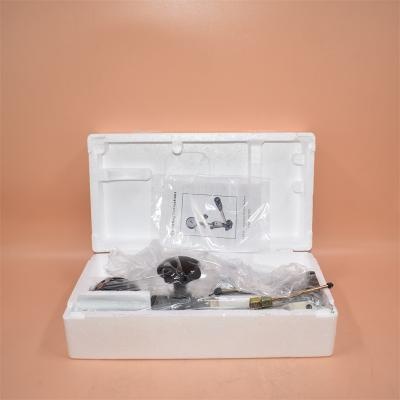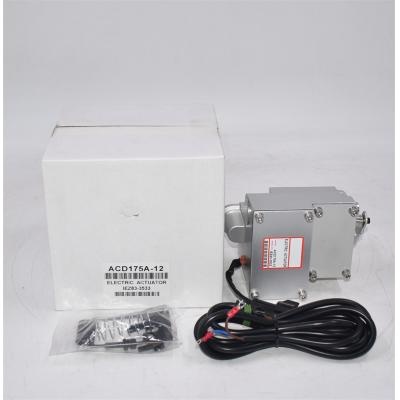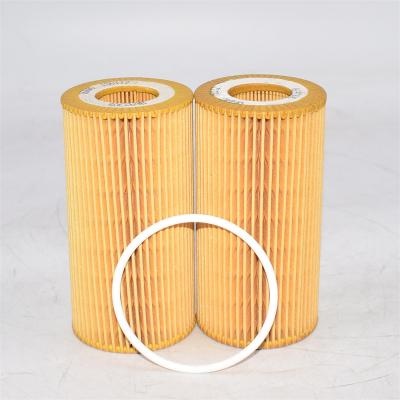Typical structure of the air filter
1,Primary filter
Before the main filter element, a primary coarse filter is generally added, which is used to separate particles with large mass under the action of centrifugal force by virtue of the high-speed rotary movement generated by the intake air flow, and store them in the ash pan or discharge them through the dust discharge valve to reduce the load of the main filter element. The resistance increases slowly, extending the life of the filter element. According to different structures, the coarse filters can be divided into the following categories: basin type coarse filters, with filtration efficiency of 93% - 96% and high resistance, up to 1,2kPa. The single barrel type coarse filter has a complex structure and high efficiency, and can be arranged separately from the main filter element. When the overall dimension of the composite air filter is large, this structure can be used.
Conical coarse filter, simple in structure, but with good efficiency.The advantage of blade ring is that it does not occupy space alone, and it is directly sleeved outside the main filter element. The overall size of the filter is not increased due to the coarse filter. The structure is compact, and the coarse filtration efficiency is 85%. The disadvantage is that the manufacturing process is difficult.
Tangential air inlet: a spiral air inlet with rectangular section is arranged on the inner wall of the shell outside the main filter element. The spiral angle of the spiral air inlet is 25 °~27 °, and the circumferential envelope angle of the air inlet shall not be less than 140 °. The advantages are compact structure, efficiency of more than 70%, and the air flow speed of 15m/s~30m/s is required to play a better role.
The cyclone tube includes an outer tube and an inner tube, and the lower edge of the outer tube has a certain taper. A guide vane is arranged between the inner and outer tubes of the axial intake cyclone tube; A spiral inlet port is formed between the inner and outer tubes of the tangential intake swirl tube. The commonly used cyclone pipe diameter is 30mm~45mm.
The channel area of a cyclone tube is limited. As a coarse filter, a group of cyclone tubes need to be in parallel. The advantage of the cyclone tube coarse filter is that the filtering efficiency is high, reaching 85%~95%, or even 99%. The disadvantages are high intake resistance and large overall dimensions, which are generally used on diesel vehicles and tank fighting vehicles used in high-power mining areas with poor operating environment.
2.Oil bath air filter
Oil bath air filter. When air enters the shell, it first strikes the oil surface, then changes the direction of 180 ° and passes through the oil immersed filter screen. When the air flow changes direction, the dust in the air is separated due to inertia, thrown into the oil pan, and stuck when contacted by the oil surface. The remaining part of the dust is stuck when passing through the filter element. When the air flow contacts the oil surface, a small amount of engine oil is splashed. The air flow of oil mist passes through the filter element, making the filter element constantly wet. The ash particles on the filter screen are washed down and returned to the oil pan, forming an oil circuit circulation, which enhances the filtering efficiency.
Oil bath filter media include steel wire mesh, foam polyurethane, fiber fabric, etc. The distance between filter screen and oil level shall be controlled at about 12.7mm. If the distance is too small, it is easy to make the oil pan lose pumping; If the distance is too large, the oil killing ability will be reduced, and the filtering efficiency will be reduced.
The advantage of oil bath type is that the filter element will not be damaged and can be reused after cleaning the filter element. The disadvantage is low efficiency. Inclined oil level will also affect filtering efficiency, short maintenance cycle and oil consumption. At present, single stage air filters rarely use oil bath type, and are mostly used for composite air filters.
3.Wet air filter
The filter element is made of filter paper, chemical fiber, foaming polyurethane and other materials, which are drained after being soaked with oil. The structure is basically the same as that of the dry air filter. After oil immersion treatment, the filter material improves the filtering characteristics, improves the filtering efficiency, increases the ash storage capacity, and is not afraid of oil and carbon black pollution. The filter element can be used repeatedly and has a broad application prospect.
4.Dry air filter
It is made of filter paper or non-woven fabric. It is developed on the basis of filter screen. The filter screen is immersed in oil, which is called wet type. This pleated filter element is dry without oil immersion, so it is called dry type. The key of dry air filter is to control the technical parameters such as filter material aperture.
The dry air filter has the advantage of compact structure and high efficiency. The compressed air for maintenance can be blown once, and the ash storage capacity is acceptable. The disadvantage is that it is afraid of oil mist and carbon black pollution, and the paper core is easy to be damaged and lose its safety. Dry air filter is the most widely used, and oil bath structure has been basically eliminated in automobiles.
5.Composite air filter
Strainer pair 5 μ M The fine ash filtering efficiency is very poor and the ash storage capacity of the single-stage air filter is limited. Modern trucks combine the two, using a composite air filter, also known as a two-stage air filter. The primary filter is a blade ring and has an ash discharge valve. It should be pointed out that the rubber ash discharge valve does not work reliably. If the rubber is hard, the opening and closing of the valve will be out of control. This kind of ash support valve is a virtual one, and this structure should not be used as far as possible.
























